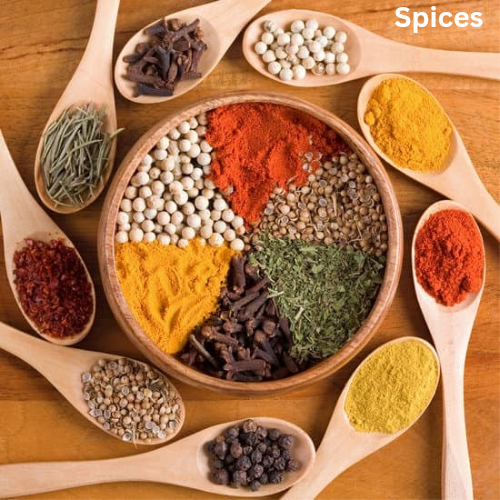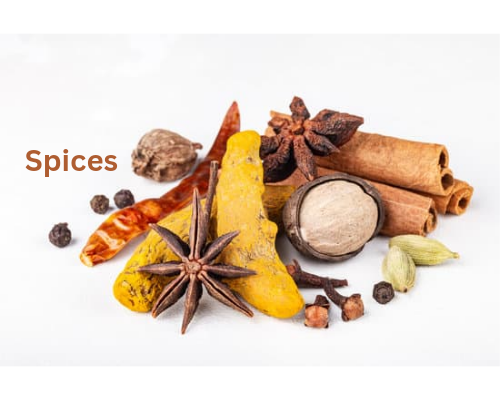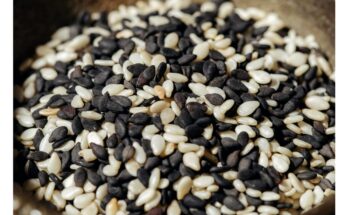Quality of Spices
Spices form an indispensable part of our cultural food pattern. The term ‘spices’ applies to natural plant or vegetable products or mixtures of these, in whole or ground form. These are used as seasoning, for imparting flavour, aroma and piquancy to foods.
As the definition indicates, spices may comprise of plant components or parts such as:
The Floral parts : such as cloves, saffron.
The Fruits: chillies, tamarind, cocum, cardamom.
The Berries: black pepper.
The Seeds: mustard, cumin, coriander, fenugreek.
The Rhizomes: turmeric, ginger.
The Roots: horseradish, loveage.
The Leaves: mint, ‘tejpat’, bay leaves, curry leaves, coriander leaves.
The Kernel: nutmeg.
The Aril: mace.
The Bark: cinnamon, cassia.
Exudate of bark: asafoetida.
Spices impart a subtle flavour to foods. Their presence is evident by their irresistible aroma which whets our appetite. They add zest and tang to otherwise insipid foods. Since minute amounts of spices are used in food preparations, the nutrients contributed to the meal are negligible.
Most spices are marketed as dry products. Spices may be used in whole or ground form. Some of the spices that are used in the whole form are mustard seeds, cumin seeds, cloves, black pepper. Mustard seeds and cumin seeds are added as seasoning in dals. Cloves and black pepper is used in some rice preparations such as pulao, khichadi etc. Most of the whole spices like pepper, cardamom, cinnamon, chilli, clove are also available in the powdered form. Some of these like cumin seeds are roasted before being powdered.
Powdered mixes of spices are also available. They can be made at home, just before use or made in large quantities and kept aside for future use. Most of the constituents of these mixes are roasted and ground and mixed. More often than not other ingredients are also added to the mix like dehydrated coconut, roasted chana dal and udad dals. These additions not only balance the flavour but also help in dispersing the powdered spice evenly in the food in which it is to be added.
Spices that are used as colouring or flavouring agents should not be used in larger quantities than necessary as they may mask the original flavour and colour of the food. Examples of powdered spice mixes used in the home are ‘sambhar powder’, ‘garam masala’, ‘dhana jeera’ etc.

Role in cooking:
Spices are used in small amounts in cookery as flavouring, colouring, appetizing and stimulating agent.
As a flavouring agent:
The flavour of spices is due to the presence of flavour compounds and essential oils which are volatile. For example the characteristic pungent flavour of chillies is due to an alkaloid called ‘capsaicin’. The alkaloid piperine is responsible for the characteristic flavour of black pepper. Almost all spices are used as flavouring agents. They may be used in the whole or powdered forms or mixed with other species. Species such as tejpat, cumin seeds, cinnamon, cloves, mustard seeds may be used in the whole form. Spices are usually added to hot oil as a seasoning or ‘vaghar’ before being dispersed in the food. Oil acts as an effective solvent for the flavour components present in the spices. However, ground spices may also be added to the food directly e.g. pepper, cardamom, pepper, jeera powder etc. Spices mix well with the food.
Almost all spices used in Indian food preparations act as flavouring agents. Two flavouring agents not mentioned earlier are tamarind and cocum, both of which are used to impart a sour flavour to dals. Tamarind pulp and/or its extract is commonly used in South India. The food industry now manufacturers tamarind powder or extract which is readily incorporated into the food mixture.
Sometimes an extract of the flavour may be used. For instance, in the making of ketchup, the freshly mixed and ground spices are put in a muslin bag which is dipped into the ketchup. The flavours are extracted from the spices which are not in direct contact with the food. In such cases only a mild to moderate flavour is desired.
Colouring Agents:
Turmeric is a common spice which imparts a yellow colour to foods in which it is used. Saffron, which is the stigma of a flowering plant, imparts an orange colour to food. As it has an intense colour, saffron is needed in very minute quantities. The colouring matter is readily dispersed in oil or water. If these spices are used in excess, they impart an intense colour to the food which is undesirable.
Appetizing and Stimulating Action:
A judicious use of the right kind of spices in a particular dish works wonders in improving its palatability. The attractive colour, stimulating odour and flavour literally makes one’s mouth water. Spices stimulate the secretion of salivary juice, thus having an appetizing effect.





Greetings
I have just took a look on your SEO for foodnestgen.com for the ranking keywords and saw that your website could use a push.
We will increase your ranks organically and safely, using only state of the art AI and whitehat methods, while providing monthly reports and outstanding support.
More info:
https://www.digital-x-press.com/unbeatable-seo/
Regards
Mike Walker
Digital X SEO Experts
Thanks for visiting our website.
Regards
Team Food Nest Gen
Hi there,
I have reviewed your domain in MOZ and have observed that you may benefit from an increase in authority.
Our solution guarantees you a high-quality domain authority score within a period of three months. This will increase your organic visibility and strengthen your website authority, thus making it stronger against Google updates.
Check out our deals for more details.
https://www.monkeydigital.co/domain-authority-plan/
NEW: Ahrefs Domain Rating
https://www.monkeydigital.co/ahrefs-seo/
Thanks and regards
Mike Pearcy
Thanks for visiting our website.
Regards
Team Food Nest Gen
Simply want to say your article is as surprising. The clearness in your post is just spectacular and i can assume you’re an expert on this subject.
Fine with your permission allow me to grab your RSS feed
to keep up to date with forthcoming post. Thanks a million and please keep up the
enjoyable work.
Thank you so much for your appreciation!
Keep visiting!
Regards
Team FoodNestGen